Kim Bierwert Talks Coaching After 40 Years with Smith College
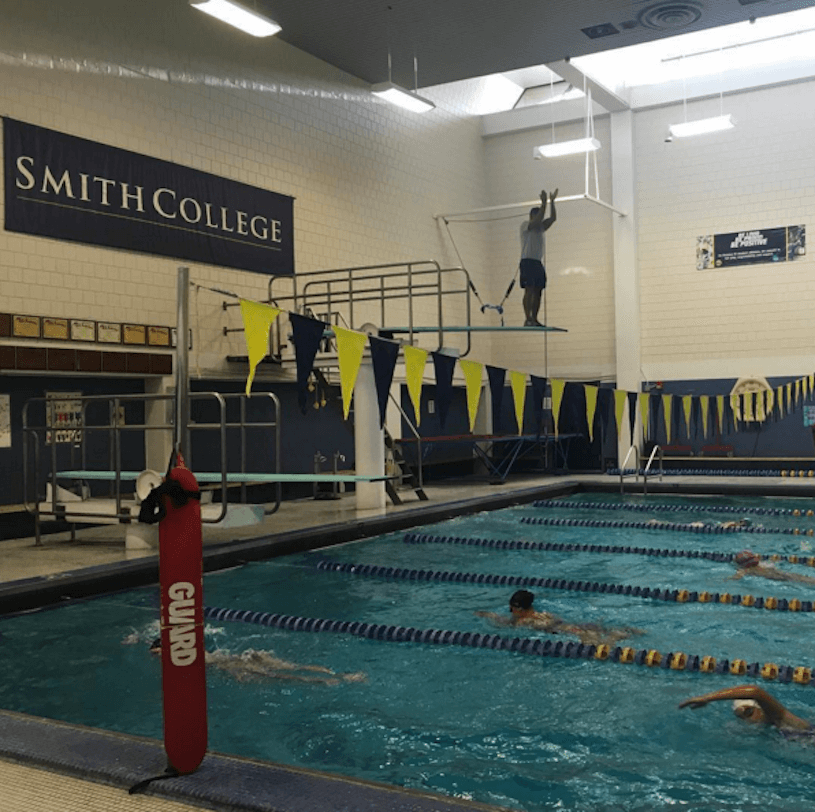
By Abby Bergman, Swimming World College Intern.
From helping kids find a love for the water to training swimmers to cross the English Channel…from chairing the NCAA Division III Swimming and Diving Committee to producing national champions, Coach Kim Bierwert has had an incredible career. For the past 40 years, Bierwert has led the Smith College Swimming and Diving program including seven English Channel crossings, 21 Nationals appearances and 30 All-Americans. Although Bierwert is retiring following the 2016-17 season, his involvement in the collegiate swimming and diving world will leave a legacy for many years to come.
Swimming World recently sat down with Bierwert to discuss his coaching career and upcoming retirement.
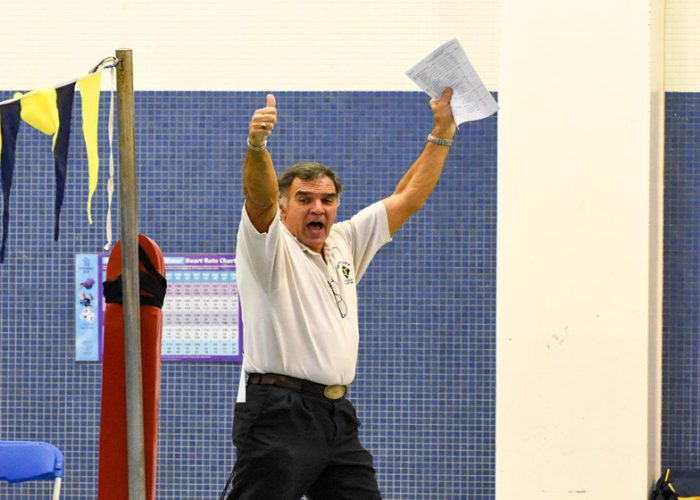
Photo Courtesy: Smith College Swimming and diving
Swimming World: How did you first start swimming?
Kim Bierwert: My first experience in terms of swimming was in an outdoor pool, actually the pool I run now (Northampton Outdoor Pool). I started swimming there and my first summer on the team we had to swim twice our age in lengths per week for our training. We could do it on our own and we didn’t have to do it all together. It was kind of fun and a very social entity.
The second year, again summer swimming, we had a coach who was a swimmer at UMASS; he had a tremendous amount of energy, desire and passion. He coached each person as if they were going to be an Olympian. He made stroke corrections and it was exciting; he motivated all of us to want to swim. Around that time, my sisters and I decided we wanted to be year-round swimmers and that’s really how I got started. It was all due to that one particular person who had the energy and motivation to create something inside of us that made us want to be swimmers.
SW: Why did you start coaching?
KB: I swam through high school and through college; in my last year, I began to work at that same outdoor pool. I was hired as a guard and started coaching at the pool and teaching for the summer rec team at the pool. I found that I had a great affinity for coaching and I really enjoyed it. It gave me great reward to find that I had a positive impact on the kids and to help them get excited the same way that I had been excited by Bruce Morton.
I was still swimming at MIT and while I could tell that I was improving, I kept assessing what I could have done differently in terms of technique and training. That made me think about what made a good coach and what made good training and how to help myself become a better coach. When I finished at MIT, I knew that although I had a degree in economics and specialized in labor relations, what I really wanted to do was coach. That’s where I felt the happiest and most at peace and most excited and fulfilled.
So I applied for the job at the local YMCA and started coaching there. The Holyoke Regional YMCA (HRY) program got to be one of the better programs in the area and people went to Junior Nationals and Nationals. I was trying to create a good, positive, energetic environment where everybody had fun and everybody worked hard to try to get better.
Around that time the Northampton High School needed a coach; I applied and became high school coach. The Smith College pool opened in February 1977 and I volunteered as the diving coach and volunteer assistant diving coach. I did that in exchange to get some board time for a fledgling diving group that I had and some pool time for the senior HRY swimmers. The head coach left in the summer of 1977 and I applied for the interim coaching position and eventually became the permanent coach the next year.
So that’s how I got from point A to point B. It was a journey that was filled with a lot of passion, success and learning along the way. As I look back on how I coached 40 to 50 years ago and how the training has changed over time, the one constant is the interaction with the swimmers. And the attempt to create energy and motivation and camaraderie and desire among people as well as the opportunity to see the excitement when people do great things.
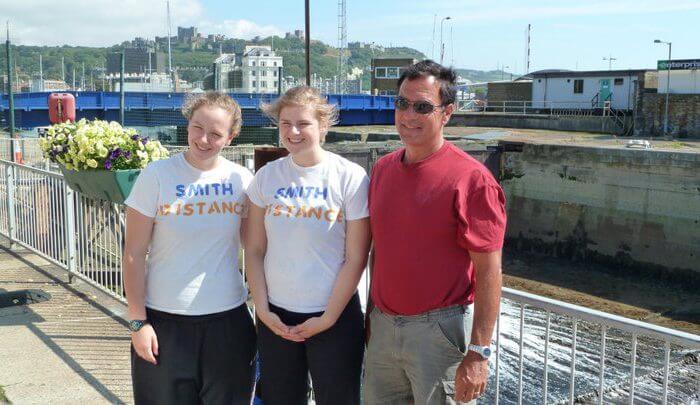
Coach Bierwert supports Mackenzie Bradley and Emma Riem in Dover before their channel swims. Photo Courtesy: Emma Riem
SW: Swimming and Diving are two very different sports to coach, yet you did both. How did you end up mastering both skill sets?
KB: In terms of swimming I think it was pretty obvious– I was a swimmer and I knew a lot about it. The sport of diving involved a lot of the way my brain works in terms of physics. From an analytics standpoint looking at diving meshed with the math and science part of my brain. Diving is totally physics, though there is a huge mental side to it as well. I was attracted to that notion and I would watch diving at MIT. I would listen to my coach advise divers and listen to what he was saying and why he was saying it and that helped me understand of the physics of diving.
When I was coaching the age group swim team, I had the opportunity to start a diving program. When I came to Smith it was a pretty natural progression. I used to teach swimming at MIT on the weekends and my coach asked me to sub in for him for diving and that was probably my first time coaching diving.
And why do I do both? I think because they’re both rewarding in different ways. The interaction with swimmers and divers is similar but also very different. Working with divers to overcome fears and working with swimmers and having them understand that the pain they feel is going to go away and swimming faster is not going to hurt more. The whole mental side of teaching has fascinated me. Why have I kept doing that for 40 years? I don’t know. Sometimes I ask myself that question and obviously it’s not something many coaches do successfully on a collegiate level, and it’s been a lot of fun.
SW: What is the best part about being a coach?
KB: Watching someone improve, whether someone is learning how to do butterfly for the first time or making Nationals or winning an event at Nationals. It’s that doing something for the first time that they didn’t really think was possible. When someone has a lofty goal, whether it’s crossing the channel or breaking 1:20, and they work toward it every day and then finally achieve that goal, that is the most important thing to me. Seeing that excitement in someone’s eyes when they achieve something they’ve never done before.
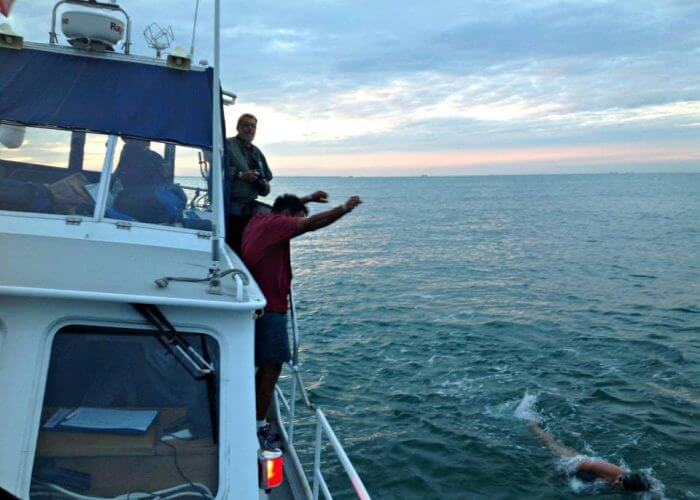
Coach Bierwert encourages Paige Christie during her 2014 English Channel swim. Photo Courtesy: Paige Christie
SW: You are known for using sayings (or Kim-isms) to motivate your swimmers. What are some of your favorites and what are the stories behind them?
KB: “There’s always more toothpaste in the tube” is one phrase I’ve been using for a long time. That one sort of came about because I wanted people to realize that there is always a little more that you can use but you have to dig down to find it and I wanted to use something that everyone could relate to.
“It’s ok to have butterflies but the trick is to make them fly in formation” is a phrase demonstrating that it’s okay to be excited and nervous but the key is to be able to control your energy and flow so that you can be successful. Being nervous is not a bad thing, it’s a good thing. If you’re nervous that means you care.
SW: Can you describe one of your favorite coaching memories?
KB: Before the very first dual meet we had for Smith, we were getting ready to go and everyone was excited and energetic. We were gathering outside the main administrative offices and the administrators could not believe the energy and excitement that we had going to our meet. And I really couldn’t speak to how other teams behaved before meets, but I knew that that was how I wanted our team to be; to relish the opportunity to perform. It was an opportunity to see something that I took for granted and thought was normal, and for others to think it was unique.
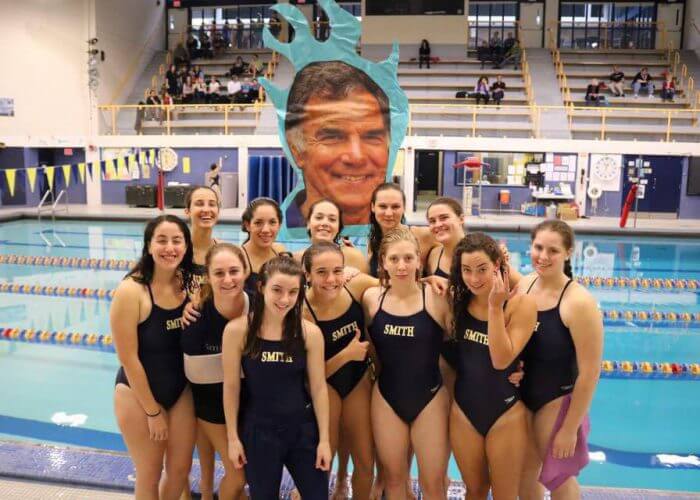
Smith College swimmers celebrate Coach Bierwert’s 40th season using a giant cutout. Photo Courtesy: Abby Bergman
SW: What advice would you give to young coaches?
KB: To a coach starting off, just remember it’s about helping people, and exciting people, and creating that little bit energy to motivate people to give that little bit more and keep them moving forward. As an athlete, they need to know that you care about them and see them – not as one of many people in the pool – but see them as a singular entity. If they can see that and feel that in particular, that’s going to help them achieve their goals.



